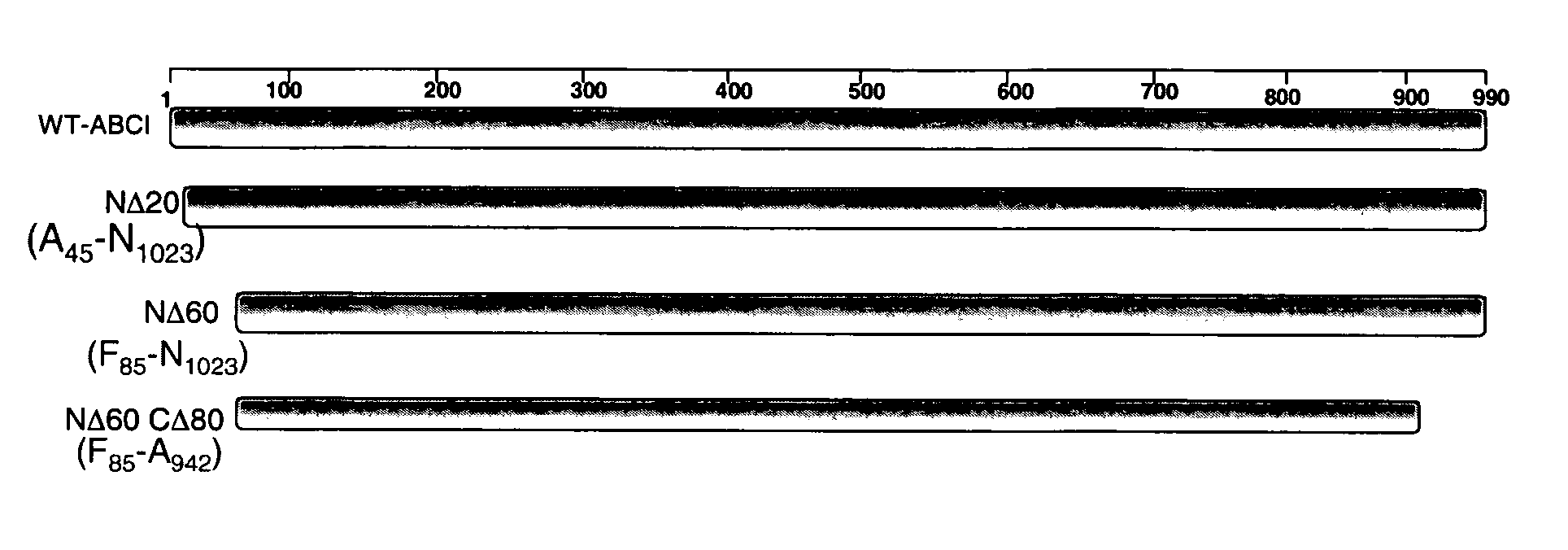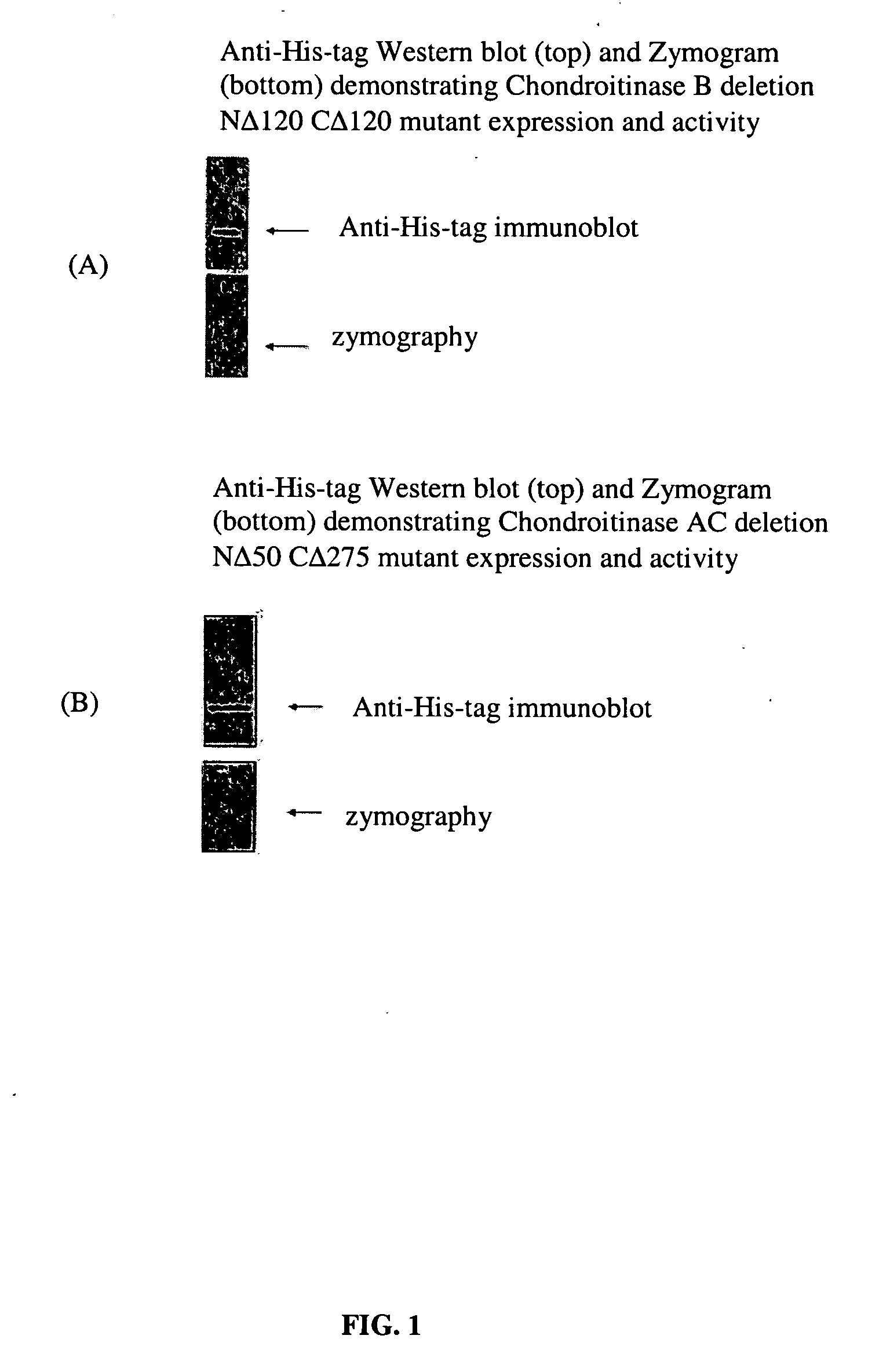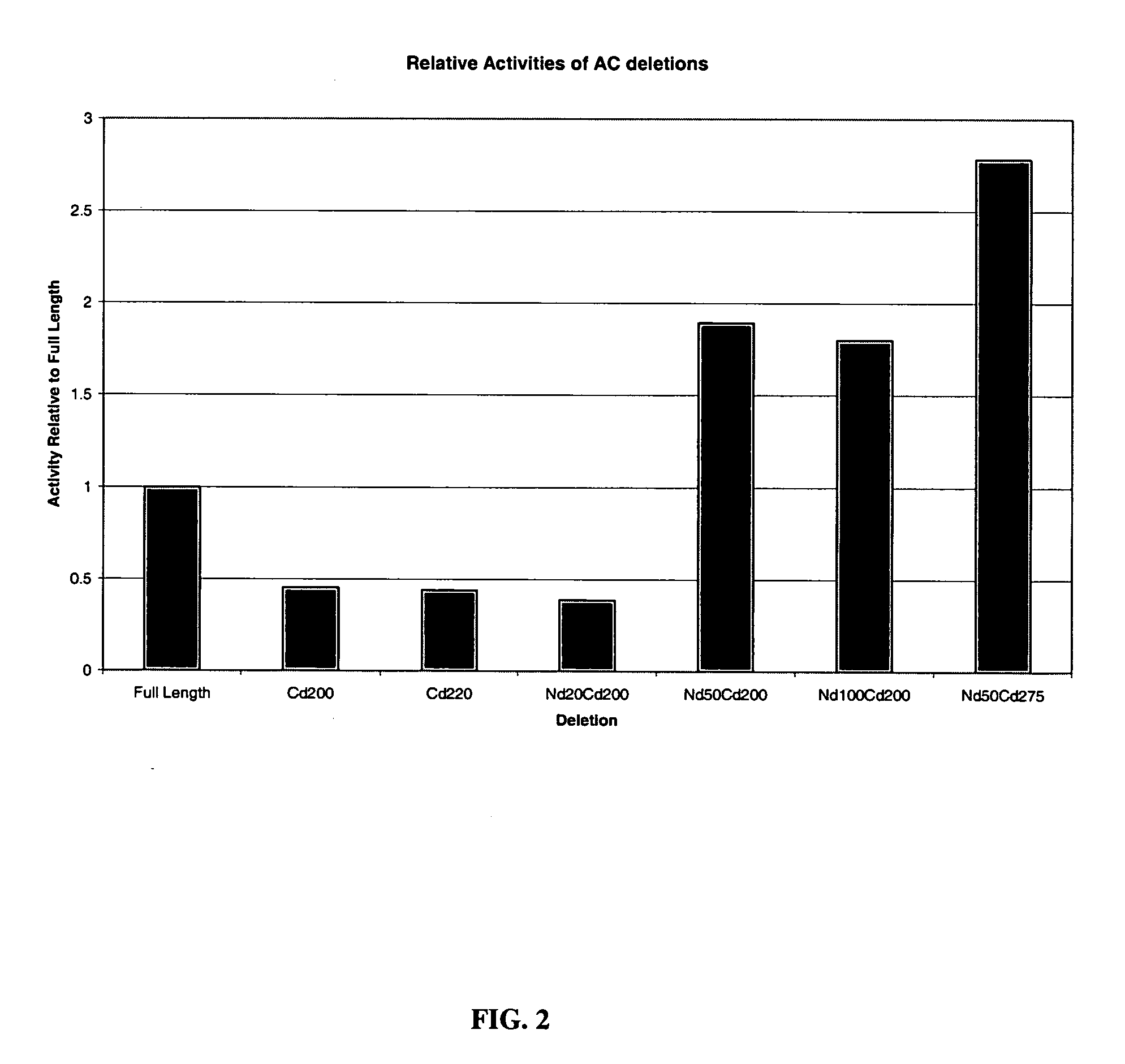Proteoglycan degrading mutants for the treatment of CNS
- Summary
- Abstract
- Description
- Claims
- Application Information
AI Technical Summary
Benefits of technology
Problems solved by technology
Method used
Image
Examples
example 1
[0060] This phrophetic example illustrates the diffusion of molecules into cells and tissue using a deletion or substitution mutant of a proteoglycan degrading polypeptide in a composition.
[0061] A brain from an adult Sprague Dawley rat may be removed from the skull and hemispheres may be soaked in buffer alone or containing about 33 U / ml of a mutant proteoglycan degrading polypeptide such as (SEQ ID NO: 9) NΔ50 CΔ200 AC (T74-T500) protein for 2 hours at 37° C. Hemispheres can be rinsed and immediately placed in dye such as Eosin Y (Sigma) or a saturated solution of Congo Red (Sigma) in 70% ethanol. Slabs of tissue may be cut and images acquired on a scanner. The penetration of the dyes into the brain tissue may be used as an indication of the proteoglycan degrading activity of a mutant proteoglycan degrading molecule and expectant penetration or diffusion of therapeutic and diagnostic molecules into the same type of tissue.
example 2
[0062] This prophetic example illustrates a Chondroitinase ABC I Assay Protocol which may be modified to measure the activity of a mutant proteoglycan degrading molecule, for example a Chondroitinase ABCI deletion mutant or a fusion proteins including a deletion and or substitution mutant of a proteoglycan degrading polypeptide.
[0063] The production of reaction products from the catalytic activity of a proteoglycan degrading molecule or fusion protein can be determined by a measurement of the absorbance of the proteoglycan degradation product at a wavelength of 232 nm. A typical reaction mixture consisted of 120 μl of reaction mixture (40 mM Tris, pH 8.0, 40 mM NaAcetate, 0.002% casein) combined with a substrate (5 μl of 50 mM chondroitin C (MW 521), chondroitin 6 SO4, or dermatan sulfate) and 1.5 μl of chondroitinase ABCI (SEQ ID NO:1) or a mutant of chondroitinase like (SEQ ID NO:2). Reaction mixture aliquots of about 120 μl can be prepared at 30-37° C. for 3 min or longer. The p...
example 3
[0066] This example shows that deletion mutants of chondroitinase are biologically active.
[0067] Recombinantly produced chondroitinases AC and B have shown efficacy in vitro by overcoming the barrier of an inhibitory substrate border, such as aggrecan and result in neurite extension for rat cortical neurons. To facilitate effective transport of the above enzymes to the injury site, deletion mutants of these chondroitinases were prepared to determine the minimally-sized polypeptides capable of degrading CSPGs. The cleavage activity of all these mutants have been screened in vitro by zymographic assay using aggrecan as substrate. A truncated polypeptide of chondroitinase AC (nΔ50-cΔ275) (SEQ ID NO:11) lacking 50 and 275 amino acids from the amino and carboxy termini respectively having a molecular weight of 38 kDa compared to 75 kDa of the full length protein was found to be about the minimal size mutant chondroitinase AC that retains activity as tested by zymography assay FIG. 4(B)....
PUM
| Property | Measurement | Unit |
|---|---|---|
| Fraction | aaaaa | aaaaa |
| Composition | aaaaa | aaaaa |
| Adhesion strength | aaaaa | aaaaa |
Abstract
Description
Claims
Application Information
 Login to View More
Login to View More - R&D
- Intellectual Property
- Life Sciences
- Materials
- Tech Scout
- Unparalleled Data Quality
- Higher Quality Content
- 60% Fewer Hallucinations
Browse by: Latest US Patents, China's latest patents, Technical Efficacy Thesaurus, Application Domain, Technology Topic, Popular Technical Reports.
© 2025 PatSnap. All rights reserved.Legal|Privacy policy|Modern Slavery Act Transparency Statement|Sitemap|About US| Contact US: help@patsnap.com



